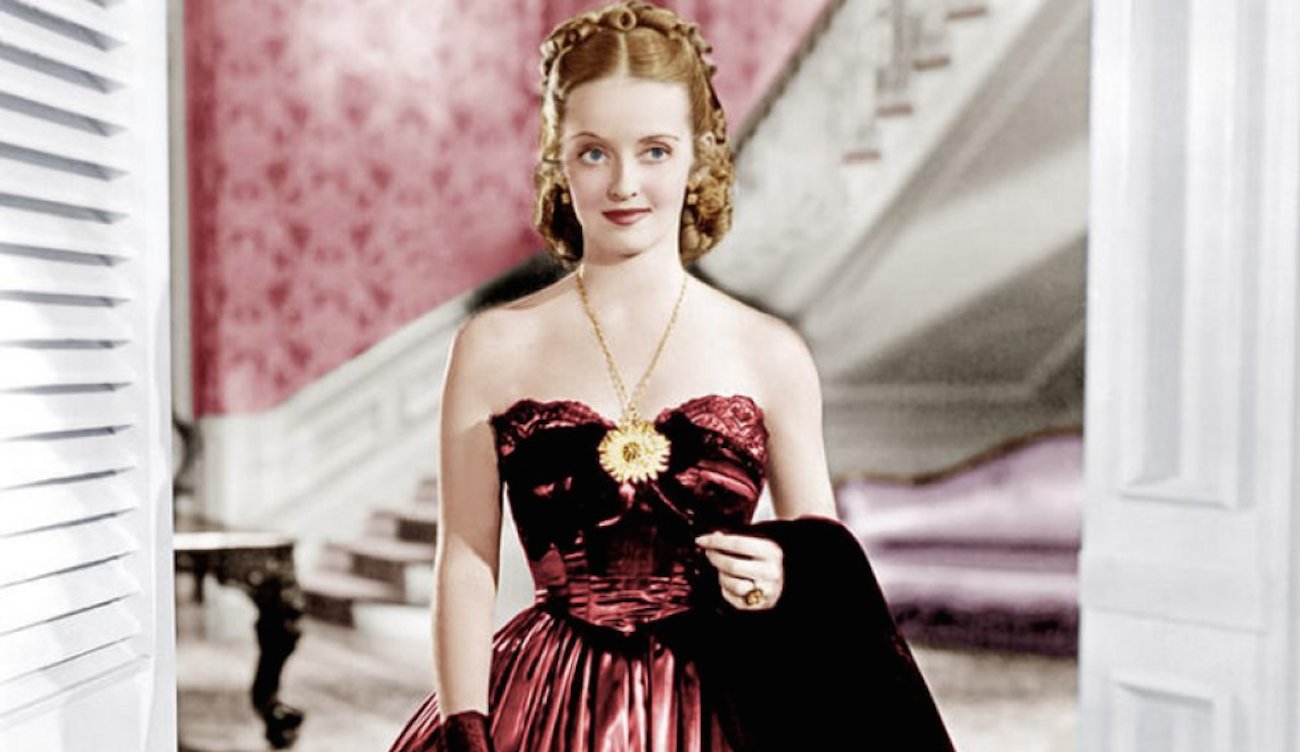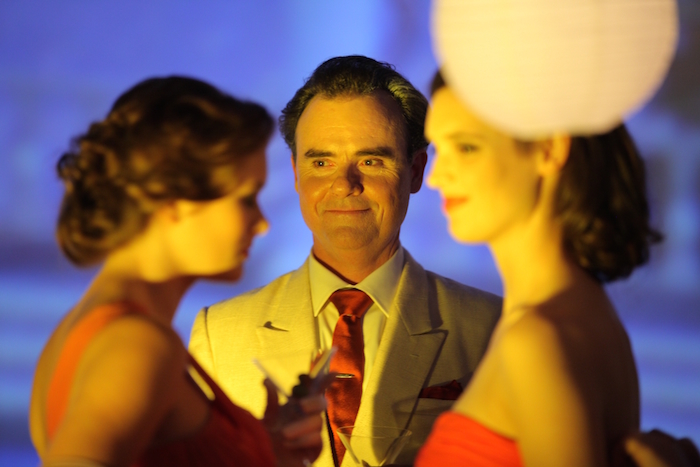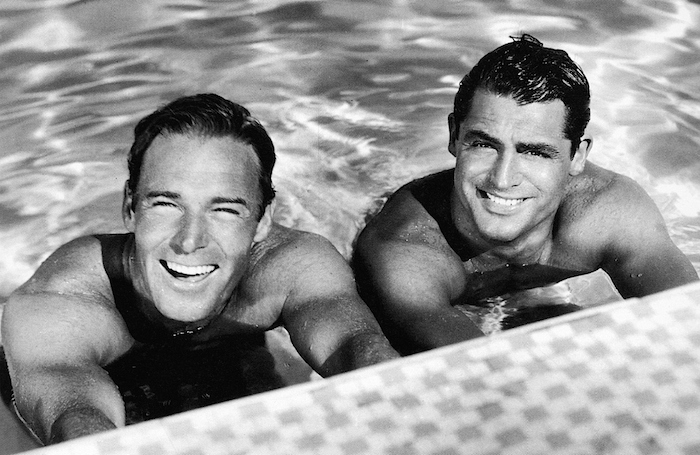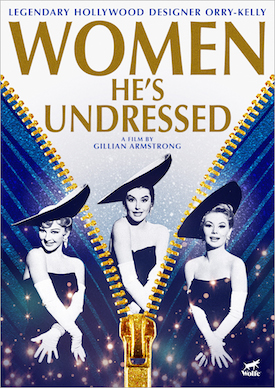 I first heard about Oscar-winning costume designer Orry-Kelly when I read Bette Davis’s great autobiography Mother Goddam. Well, that was actually a biography by Whitney Stine but Davis’s words appear throughout the book in red ink as she corroborates or refutes anecdotes about her career and adds delicious details including many about her close friendship and working relationship with three-time Oscar-winning costume designer Orry-Kelly (born Orry George Kelly in New South Wales, Australia in 1897) who designed the costumes for many of Davis’s most iconic films including Dark Victory, Now, Voyager, Jezebel, The Letter, Mr. Skeffington, and The Private Lives of Elizabeth and Essex.
I first heard about Oscar-winning costume designer Orry-Kelly when I read Bette Davis’s great autobiography Mother Goddam. Well, that was actually a biography by Whitney Stine but Davis’s words appear throughout the book in red ink as she corroborates or refutes anecdotes about her career and adds delicious details including many about her close friendship and working relationship with three-time Oscar-winning costume designer Orry-Kelly (born Orry George Kelly in New South Wales, Australia in 1897) who designed the costumes for many of Davis’s most iconic films including Dark Victory, Now, Voyager, Jezebel, The Letter, Mr. Skeffington, and The Private Lives of Elizabeth and Essex.
Australian filmmaker Gillian Armstrong (My Brilliant Career, Oscar and Lucinda) traces the rise and fall of one of the most spectacularly talented costume designers of Hollywood’s golden age. Armstrong examines the four decade-long career of the costume designer and looks at his unusually open life as a gay man including his long-term relationship with screen legend Cary Grant.
In Women He’s Undressed, Armstrong mixes recreations of moments from Orry-Kelly’s life with personal accounts from intimates and admirers to create an unforgettable portrait of one of Hollywood’s most renowned godfathers of glamour — the man who costumed stars in hundreds of classic films including Casablanca, 42nd Street, An American in Paris, Les Girls, Oklahoma, Gypsy, and Some Like It Hot. I spoke to Gillian Armstrong about her work on this incredibly fun-to-watch film.
Danny Miller: I can’t think of many directors of your caliber who go back and forth so easily between feature films and documentaries. Was that always a conscious choice for you?
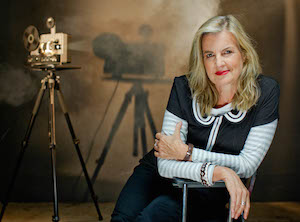 Gillian Armstrong: Not really. In the beginning I didn’t want to do documentaries at all because I’m such a control freak when it comes to visuals and that’s the last thing you can do in a documentary! It all started with this film I did in 1976 called Smokes and Lollies about what it was like to be 14. That was one of my first paid jobs as a director and I kept thinking about these girls and thought it would be interesting to go back and see what happened to them. It was before I was even aware of Michael Apted’s Seven Up series but it became a similar longitudinal study.
Gillian Armstrong: Not really. In the beginning I didn’t want to do documentaries at all because I’m such a control freak when it comes to visuals and that’s the last thing you can do in a documentary! It all started with this film I did in 1976 called Smokes and Lollies about what it was like to be 14. That was one of my first paid jobs as a director and I kept thinking about these girls and thought it would be interesting to go back and see what happened to them. It was before I was even aware of Michael Apted’s Seven Up series but it became a similar longitudinal study.
So you would work on these movies in between your features?
Exactly — there have been five of them so far. I did a few other documentaries as well and then this film came to me when I was waiting around trying to get funding for my movie Death Defying Acts.
Does making a documentary use a different part of your brain than directing a regular feature film?
It really does. And because the budgets are so small and you’re paid so little, I feel like I have this incredible freedom with the documentaries — there isn’t all that money at risk so you can try things as mad and as risky as putting a real-life character in a stylized boat!
I love that part of the film — and all of your unique sensibilities that you bring. Was it always your plan to mix in an actor playing Orry-Kelly with the more traditional documentary footage?
For me, the treatment of a story, whether it’s a documentary or a feature film, has to come from the material. After doing about eight months of research about Orry-Kelly, writer Katherine Thomson and I we realized that there were very few people alive who knew him and there was very little footage of him — not even very many still photographs. So we knew making this movie was going to be tricky. But we did find a lot of his words — from his own then-unpublished memoir which is wonderful and from archives and interviews he did including a number of interviews in Australia in the 1930s and 40s whenever he came back to visit his mum. He had such a great self-deprecating wit. We could have had talking heads saying how clever he was but we knew it wouldn’t come across as well as having someone actually say his words. That’s when we started toying with the idea of having an actor. I didn’t want those scenes to be too realistic, like having him sitting at his desk or next to one of his costumes, so we decided to do something very heightened and theatrical. The whole boat thing grew out of that image we had of him as a little boy in that photographer’s boat. We thought it would work very well — here was this man who had crossed the sea to achieve his dream in America.
The actors playing him and his mother were excellent. Did you worry about criticism you might get from documentary “purists?”
Oh yeah, I knew it was risky! In fact, the only negative comments I’ve heard about the film so far are from people who didn’t think you should do that sort of a thing in a documentary. But, to be honest, I don’t think there should be any rules about such things. Why can’t I do that if I want to?
Were you already familiar with Orry-Kelly because of his Australian roots?
No, I wasn’t, which is also why I wanted to make the film. And I work in the industry and have a real love of costumes so it was a bit odd. I don’t think that many people over here knew a lot about him and that motivated me to tell his story.
I was certainly familiar with a lot of his work in the 30s and 40s but had no idea he worked on such big movies almost until the time of his death in the 1960s.
I think it was Jane Fonda in the film who said he probably died at the right time. Two years later and “boom,” it was New Wave cinema, Easy Rider, Five Easy Pieces. The golden age of Hollywood was dead and it was all about ripped denim and grunge. Nobody cared about someone who could make satin hang in just the right way!
It’s so fascinating how “out” he was as a gay man in Hollywood without really being out. I had never heard about his relationship with Cary Grant. Grant and Randolph Scott, yes, but not an inkling about him and Orry-Kelly. Did you hesitate to include any of that in the film given some people’s denial of that part of Grant’s life?
No, I didn’t, because I didn’t put anything in there that wasn’t checked. A lot of that came from Orry’s memoir. It’s a fact that Orry and Cary Grant were roommates for nearly nine years, we had hard evidence of that. And that they ran a speakeasy together for a while. I mean, no one can know exactly what goes on behind closed doors but he was an openly gay man living for years with another young man. I interviewed director Vincent Sherman’s son, Eric, in the film, whose parents took over the apartment when Cary and Orry were on the run from the mafia because of the unpaid bills from their speakeasy. I didn’t include this in the film but I asked Eric and he confirmed that the apartment only had one bedroom.
It’s sad that Cary Grant then rejected Orry-Kelly for so many years.
Yes, he completely cut Orry out of his life, that was the part that was so hurtful. It was different with Randolph Scott. Grant and Scott lived on the same street even after they were married and they met secretly for many years. I researched that relationship as well and heard one story from a maître-d at a very posh Beverly Hills restaurant who remembered Cary Grant and Randolph Scott holding hands under a table when they were white-haired elderly men. But Orry’s story was different. He and Cary were best friends for a long time, most likely lovers at first, and then Cary just cut him out of his life. There was such pressure back then — I mean, there obviously still is — for matinee idols to live a heterosexual life. I know what Cary Grant’s daughter and wives have said but I think it’s pretty clear that he was bisexual. But then, after all the hurt between them, Cary Grant shows up as a pallbearer at Orry’s funeral in 1964!
It’s interesting that the sexuality of these people is still considered so controversial to talk about.
Yes. Scotty Bowers, who you see in the film, was the first person I spoke to who actually knew Orry-Kelly. Scotty knows the sexuality of every person in the golden age of movies because he slept with most of them — including Cary Grant, Randolph Scott, and Orry-Kelly!
I’ve actually talked to Scotty several times because a friend of mine is making a documentary about him based on his book.
Oh, I’ve heard about that and I’m eager to see it! Remember the English gentleman Scotty talks about at the beginning of his book who picks him up in Hollywood when Scotty was still a marine? That was Orry!
Oh wow, I didn’t realize that!
Yes. He admired Orry very much. He used to hang out at his house a lot and said that Orry was always working and he’d often reject drawings he was doing and throw them into the trash. Scotty would say, “But these are so good!” and Orry said, “Well, if you want them, take them!” So when he came to do the interview for this film, he brought several of those drawings with him, they were wonderful!
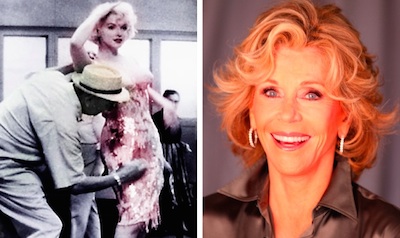 I love all of the interviews you did for the film, but I have to say that moment where Jane Fonda starts talking about what she’d like to do to Marilyn Monroe in Some Like It Hot is one of the best things I’ve ever seen!
I love all of the interviews you did for the film, but I have to say that moment where Jane Fonda starts talking about what she’d like to do to Marilyn Monroe in Some Like It Hot is one of the best things I’ve ever seen!
(Laughs.) It may be the highlight of the film! We had this very limited window with Jane but she ended up staying much longer. We were absolutely delighted, she was so warm and relaxed.
Orry-Kelly’s work in Hollywood was absolutely exquisite. Do you think making this film might inform how you work with the costume designers on your own films in any way?
I’ve always had a huge appreciation for costume designers, I’ve worked with some of the best in the world including Colleen Atwood who’s in the film. So I know what they do, and by making this film I wanted everyone to know how clever they are and that it isn’t just about making someone look pretty. As we can see from Orry’s amazing work, it’s so much about character and creating the right mood and texture. I hope people see this film and really appreciate the art and all of the subtle things great costume designers do.
I’ve always admired the costumes in your films, starting with My Brilliant Career which I cannot believe came out 35 years ago now.
YOU can’t believe it!
Women He’s Undressed is now available on VOD and DVD.

